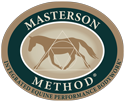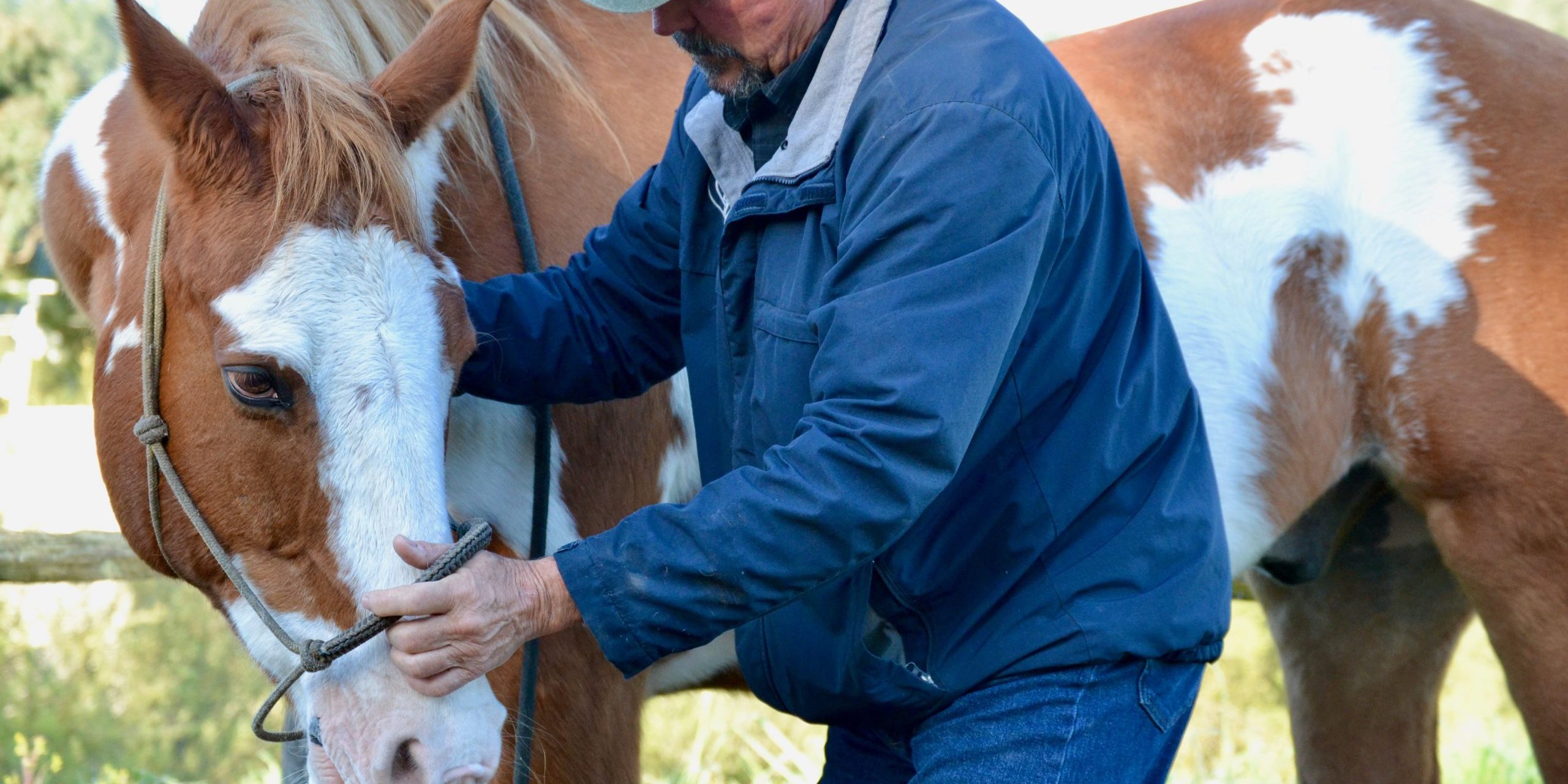Temporal mandibular joint issues can create tension in the poll, and vice-versa says, equine bodywork therapist Jim Masterson. And conversely, pain or restriction in the poll will affect other parts of the body.
“Issues in your horse’s body have a way of reflecting in his poll and atlas,” explains Masterson. Therefore, tension and pain he might have from a sore back or compensation for pain in other places – such as the feet – is generally going to collect in these two hot spots.” And when the poll tightens up, pain radiates into the TMJ and jaw, Jim notes.
“It’s very common for me to find horses with excessive pain and tension in the poll due to sore front feet, who have corresponding pain and restriction in the TMJ, but who have regular dental work done with no serious dental issues.”
Dental issues should be checked as the teeth themselves can be directly responsible for TMJ pain or restriction, suggests Masterson. Any horse, especially one that competes or performs for a living should be checked annually by a veterinarian dentist or a trained equine dental technician. Even after a dental problem is corrected, he says, it is a good idea to release the TMJ of any residual restriction.
Some causes of poll pain that can radiate to the TMJ can be rider-related, contends Masterson.
“Over-collection directly affects the poll and the TMJ through the use of the bit. Problems can also develop from using or overusing a bit that isn’t suited to a particular horse’s mouth, especially if dental issues already exist,” he notes.
According to Masterson, by releasing tension in the poll and atlas, you can help release tension in the TMJ. He suggests the following methods to effectively and safely loosen the TMJ, as well as keep healthy movement in the jaw. These exercises are designed to help release residual pain and tension, but are by no means a substitute for finding and eliminating primary causes of your horse’s TMJ discomfort, he stresses.
Masterson Method for TMJ #1
Place a thumb or fingers inside and on the roof—or palate—of your horse’s mouth, and hold it (them) gently there. This will cause your horse to lick, extend his tongue, and move his jaw from side to side, explains Masterson. Your horse will probably try to move his head around and get away at first, so keep one hand on his halter. This is not to keep your horse from pulling away but to enable you to go with him as he moves his head around.
“As your horse gets used to it, he will even start to enjoy it—especially as he begins to release tension in the TMJ from the movement.”
Masterson Method for TMJ #2
Place one or two fingertips very lightly right on the joint of the TMJ.
“This is using what I call air gap pressure, not to massage the area,” Masterson clarifies, “but to bring your horse’s attention to it.”
Keep your fingers very light; barely touching the hair. Once your horse has relaxed watch his eyes as you slowlyand lightly move your fingers around an area about the size of a nickel. Look for a blink in your horse’s eye.
“When you get a blink, stay on that spot—still barely touching the hair—and wait,” he says. “You may have to wait only five seconds, or you may have to wait 30 seconds, before your horse gives you another sign that he is releasing tension. This sign will most often be licking and chewing, or sometimes repeated yawning and shaking of the head.”
If your horse has pain in this area, cautions Masterson, he might not want you to do this. This can be a sign that he needs to release tension there, so stick with it. This above TMJ release techniques also serve as a good way to check for pain or restriction. If your horse gives you a subtle response such as blinking when you first put your fingers here, that means there is something there. If you stay long enough, he will show larger responses such as licking and chewing, shaking the head or yawning. This means he has released some tension.













